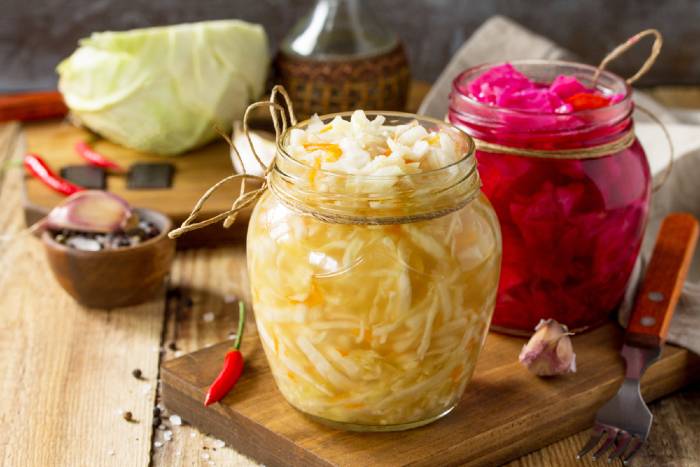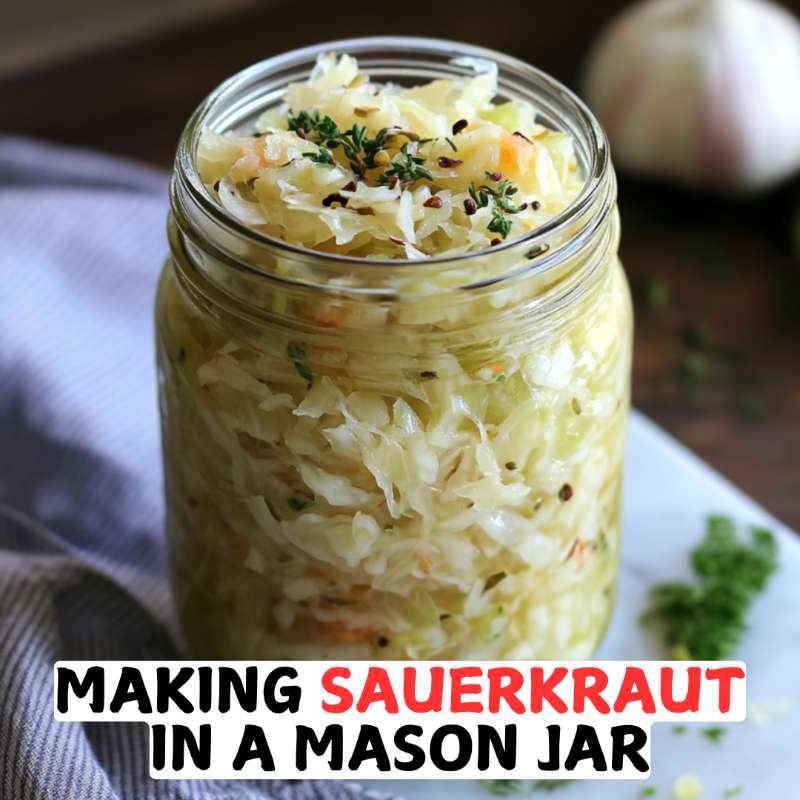Making Sauerkraut in a Mason Jar

Make sure to like Living Green and Frugally on Facebook, Shop at Amazon to help support my site and explore our PINTEREST BOARDS for innovative ways you can become self-sufficient.
The Art of Crafting Sauerkraut in a Mason Jar: A Delicious Journey
Sauerkraut, a traditional fermented cabbage dish, holds a cherished place in culinary history for its tangy flavor and numerous health benefits. Crafting this probiotic-rich delight at home is not only a rewarding experience but also an incredibly simple and cost-effective way to enjoy its freshness.
One of the easiest and most popular methods for making sauerkraut involves using a humble Mason jar. This age-old technique allows anyone to transform ordinary cabbage into a tangy, probiotic-rich delicacy.
Things You Will Need:
Before diving into the process of making sauerkraut, gather the essentials:
- Cabbage: Choose fresh, organic cabbage for the best flavor and nutritional value.
- Salt: Use high-quality, non-iodized salt like sea salt or kosher salt.
- Mason Jar: Opt for a clean, quart-sized Mason jar with a secure lid.
- Weights: Small glass or food-grade plastic weights to keep the cabbage submerged.
- Knife and Cutting Board: For slicing the cabbage.
- Bowl: To mix and massage the cabbage with salt.
Directions:
- Preparation: Remove the outer leaves of the cabbage and reserve them. Quarter the cabbage and remove the core. Thinly slice or shred the cabbage using a knife or a food processor.
- Salting and Massaging: Place the sliced cabbage in a bowl and sprinkle salt evenly over it. Massage the cabbage for several minutes until it starts to release its juices. The cabbage should become limp and watery.
- Packing the Jar: Transfer the cabbage to the Mason jar gradually, pressing it down firmly with a spoon or your hands to remove air pockets. Ensure the cabbage is submerged in its juices.
- Weighting and Sealing: Place the reserved cabbage leaves on top of the sliced cabbage to create a barrier. Add weights to keep the cabbage submerged and prevent exposure to air. Close the jar with a lid.
- Fermentation: Store the jar in a cool, dark place (around 65-75°F or 18-24°C) for 1-4 weeks. Check the sauerkraut occasionally, pressing it down if necessary to keep it submerged.
- Taste Testing and Storage: After the desired fermentation time, taste the sauerkraut. If it has reached your preferred tanginess, transfer it to the refrigerator to slow down the fermentation process. Use within several months for optimal freshness.
Storage Ideas to Keep Sauerkraut Fresh:
- Refrigeration: Store the sauerkraut in the refrigerator at or below 40°F (4°C) to maintain its flavor and texture.
- Airtight Containers: If the sauerkraut remains submerged in its juices, transferring it to a clean, airtight container can help prolong its shelf life.
- Fermentation Weights: Consider using specialized fermentation lids or weights to ensure proper fermentation and prolonged freshness.

Tips and Hints:
- Sanitization: Ensure all equipment used is clean and sterilized to prevent unwanted bacterial growth.
- Experimentation: Add spices like caraway seeds or juniper berries for unique flavors.
- Patience is Key: Allow the fermentation process to take its time; flavors develop over time.
Making sauerkraut in a Mason jar is a delightful and straightforward process, offering a plethora of flavor possibilities and nutritional benefits. With a little patience and the right ingredients, anyone can create this tangy, homemade delicacy that perfectly complements a variety of dishes while promoting gut health. So, gather your supplies and embark on a journey to craft your own delicious sauerkraut—a jar full of goodness waiting to be explored!